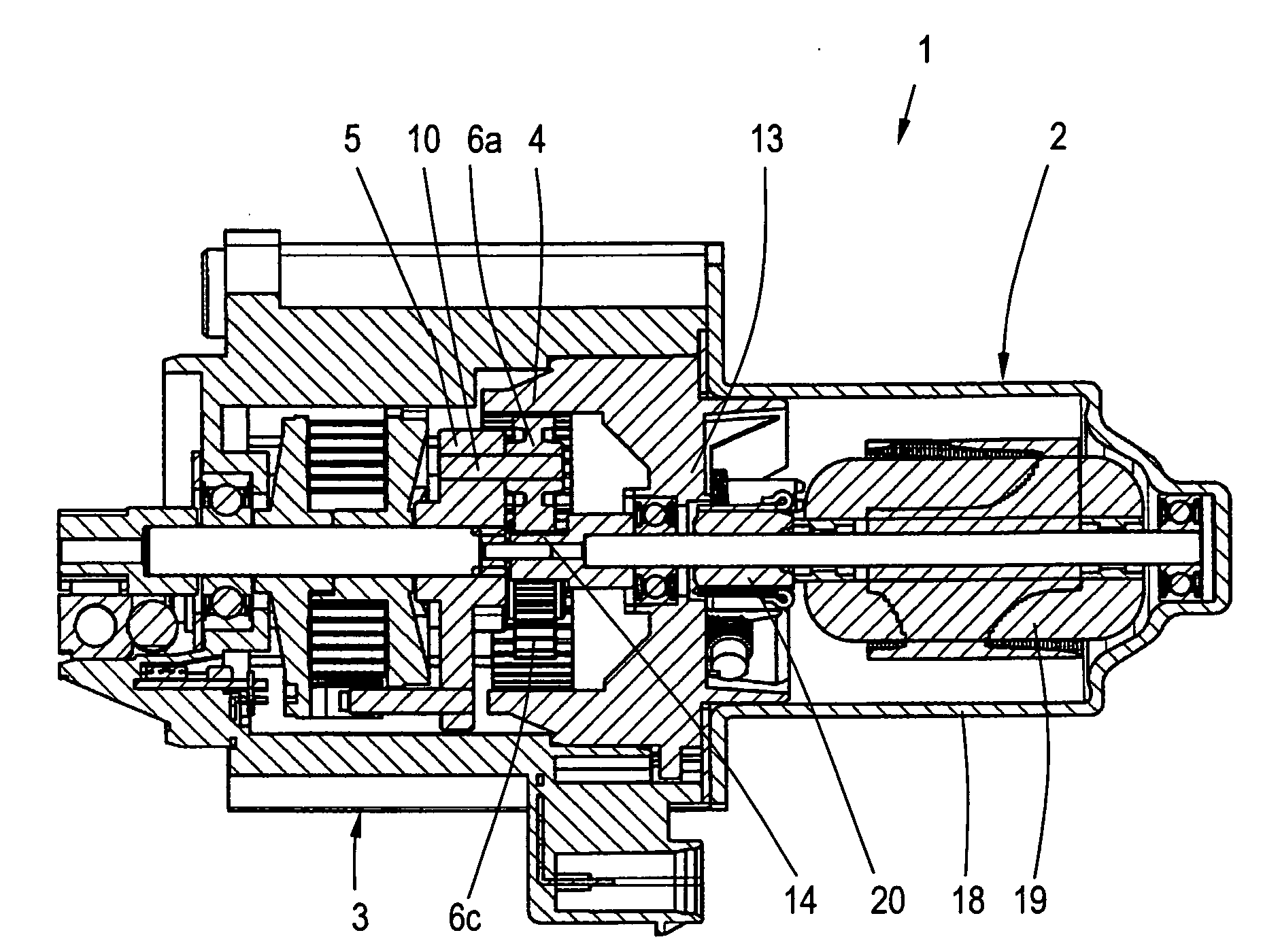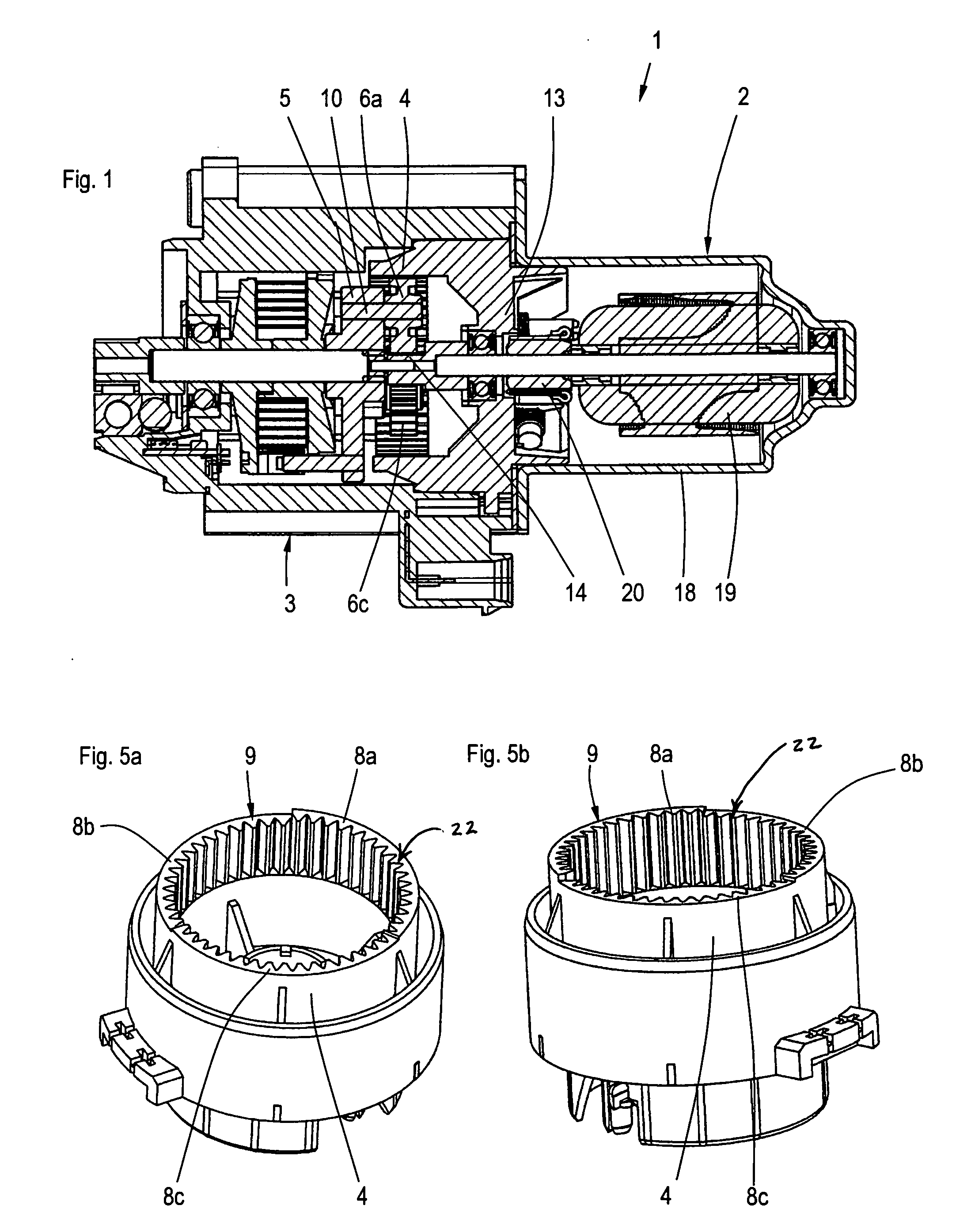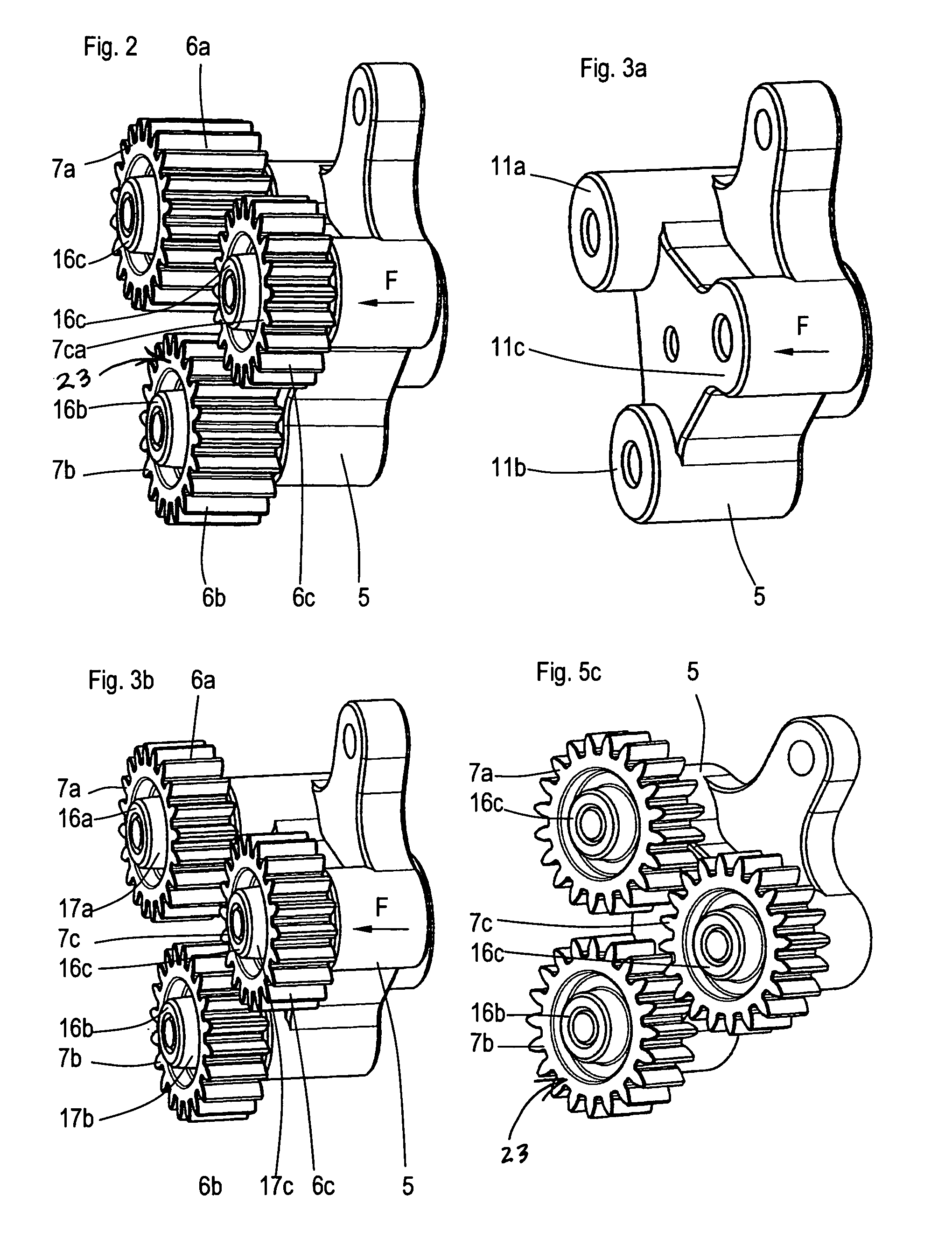Control Drive with electric motor and planetary gear mechanism
a technology of planetary gear mechanism and control drive, which is applied in the direction of differential gearing, dynamo-electric machines, applications, etc., can solve the problems of light play between the gears, and achieve the effect of reducing the frequency of assembly errors, facilitating self-alignment of the planet gears, and increasing assembly speed
- Summary
- Abstract
- Description
- Claims
- Application Information
AI Technical Summary
Benefits of technology
Problems solved by technology
Method used
Image
Examples
first embodiment
[0024]According to the invention, the planet gears (6a, 6b, 6c) have different thicknesses in the axial direction. Time sequencing during assembly can therefore be achieved. However, a drawback is that different individual parts are necessary. In addition, this solution might lead to undesired noise at higher speeds, for which reason this embodiment is not preferred.
second embodiment
[0025]A second embodiment is characterized by the fact that the planet gears (6a, 6b, 6c) are mounted in different axial arrangements on the planet carrier (5), the planet gears having the same shape. Time decoupling of the engagement time of the planet gears is also achieved with this solution. Only one component must be changed, depending on the design of the planet carrier.
[0026]A drawback in the two embodiments just mentioned is also the axial mounting of the planet carrier in the installed state. This must occur on the planet carrier itself, because a contact surface in the ring gear or gear housing would require either an additional component or large axial play would have to be tolerated in at least two planet gears.
[0027]In order to implement the second embodiment, the planet carrier (5) has stud axles (10a, 10b, 10c), on which the planet gears (6a, 6b, 6c) are radially mounted, and the planet carrier (5) has stationary seat surfaces (11a, 11b, 11c), on which the planet gear...
third embodiment
[0028]In the invention, it is proposed that the front surfaces (7a, 7b, 7c) of the planet gears (6a, 6b, 6c) be arranged in different axial positions in the assembled state, the planet gears (6a, 6b, 6c) having the same tooth width and stationary seat surfaces (15a, 15b, 15c or 16a, 16b, 16c) axially protruding on both sides of the teeth of planet gears (6a, 6b, 6c) to different extents. The ring gears are designed in one piece with hubs or connected by press-fit, the ring gears being arranged axially offset to different extents relative to the hub. With the planet gears assembled, identical parts can be used and the desired geometry achieved merely by different press-fit heights.
[0029]For the first and third planet gears (6a, 6c), they can be identically designed, being merely rotated by 180°, in order to achieve a different axial offset. The second planet gear (6b) differs from the first and third planet gears, but can be shaped symmetrically to a center plane and therefore mounte...
PUM
| Property | Measurement | Unit |
|---|---|---|
| rotation | aaaaa | aaaaa |
| symmetry | aaaaa | aaaaa |
| area | aaaaa | aaaaa |
Abstract
Description
Claims
Application Information
 Login to View More
Login to View More - R&D
- Intellectual Property
- Life Sciences
- Materials
- Tech Scout
- Unparalleled Data Quality
- Higher Quality Content
- 60% Fewer Hallucinations
Browse by: Latest US Patents, China's latest patents, Technical Efficacy Thesaurus, Application Domain, Technology Topic, Popular Technical Reports.
© 2025 PatSnap. All rights reserved.Legal|Privacy policy|Modern Slavery Act Transparency Statement|Sitemap|About US| Contact US: help@patsnap.com



